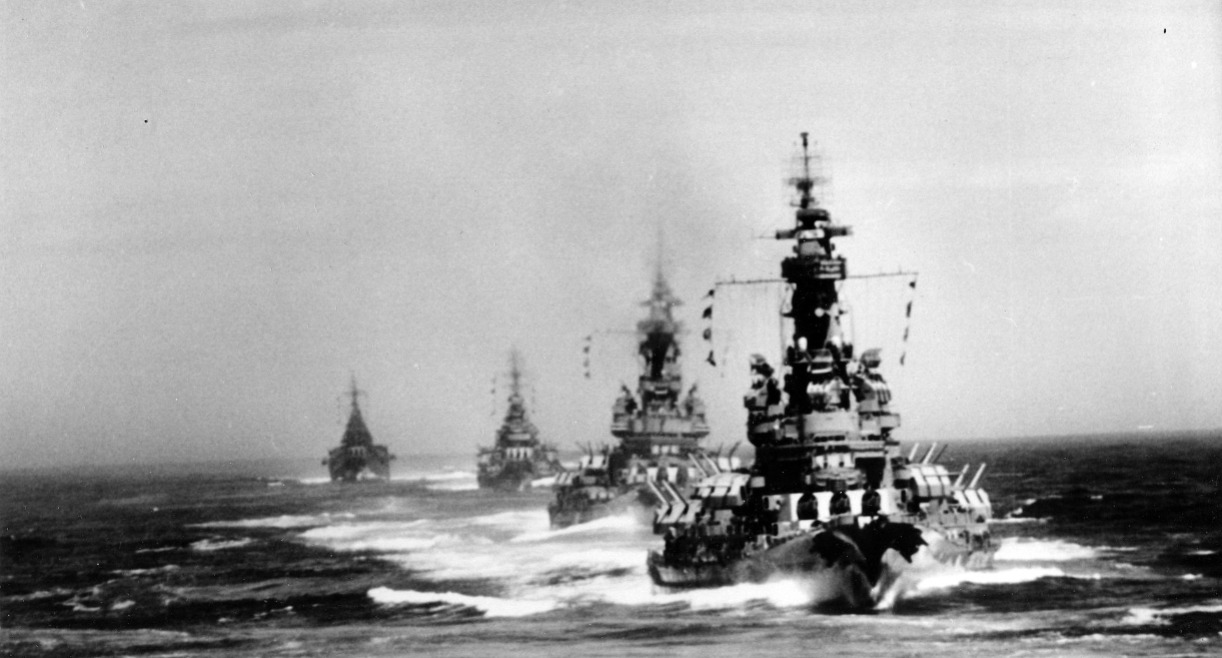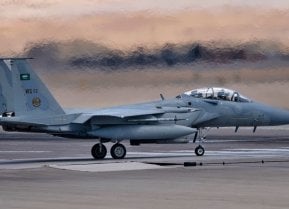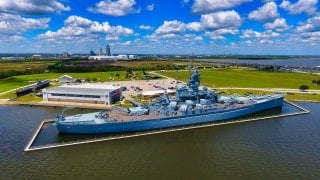South Dakota-Class: One of the U.S. Navy's Most Powerful Battleships Ever
All four South Dakota-class battleships saw broad service during the Second World War, but their careers were cut short when the war ended. All four were commissioned in 1942, yet each was decommissioned in 1947.
The South Dakota-Class – the First Post-Treaty U.S. Navy Battleships - In the late 1930s, with the clouds of war on the horizon and the Washington Naval Treaty and subsequent London Naval Treaties dead in the water, the U.S. Navy moved forward with a new class of fast battleships – to be named for the Mount Rushmore State.
Designed to the same treaty standard displacement limit of 35,000 long tons (35,600 tons) as the preceding North Carolina-class, and even with the same main battery of nine 16-inch/45 caliber Mark 6 guns in three-gun turrets, the new South Dakota-class battle wagons were more compact and far better protected.
Naval historians have often dubbed the new class of warships the "best treaty battleships" ever built.
The Other South Dakota-Class
The naming choice for the lead-ship and thus a class of the battlewagons was unique – as it was essentially a do-over for the 40th state.
During the First World War, the U.S. Navy began to move forward with a new class of battleships. Designed to be the "ultimate dreadnoughts" with "all-or-nothing" protection, displacement would have been 12,000 tons greater than the other Standards, with only a two-knot increase in speed.
The class was ordered in the same program that created the Lexington-class battlecruisers. However, the war ended before any of the new warships were completed.
The planned South Dakota-class fell victim not to a rival power but to the Washington Naval Treaty of 1922. All six of the planned warships were canceled when the vessels were already between 11 percent and 38 percent complete.
The New South Dakota-Class
Following the end of the naval treaties, the United States Navy quickly moved forward with its plans to construct the fast battleships, warships that were still equipped with big guns, yet were speedy enough to keep up with aircraft carriers.
The first two ships of the class were formally ordered on April 4, 1938. An additional pair of battleships was subsequently added two months later under the Deficiency Authorization that was passed due to increasing international tensions.
The "escalator clause" of the Second London Naval Treaty had already been invoked, and that had allowed the new design to mount the 16-inch guns. Yet, Congress still specified that the vessels had to stay within the 35,000-ton limit set by the earlier Washington Naval Treaty.
The most apparent difference from the North Carolina-class was a slightly reduced hull – shortened by some 60 feet), which allowed for improved horizontal and underwater protection.
Additionally, where the North Carolina battleships had twin funnels, the South Dakota-class were fitted with a single funnel, and faired into the after part of the bridge.

In addition to the nine main guns, the class was armed with sixteen to twenty-five-inch (127mm) DP guns, seventy-six 40mm (1.6-inch) anti-aircraft guns, and sixty-seven single 20mm (0.8-inch) anti-aircraft guns. The armor consisted of 12.2 inches (310mm) at the belt, 11.3-inches (287mm) at the bulkheads, and 11.3-17.3-inches (287 to 349mm) at the Barbettes. The deck also had upwards of 1.5-inches (38mm) of plating. The internal side armor sloped on at an angle of 19 degrees from the heavy armor deck, extending to the double bottom as a longitudinal anti-torpedo bulkhead.
The warships were thus well armored and armed. All four South Dakota-class battleships saw broad service during the Second World War, but their careers were cut short when the war ended. All four were commissioned in 1942, yet each was decommissioned in 1947.
There were various schemes outlined to update or convert the warships to new uses in the early 1960s, yet nothing came of it. USS South Dakota (BB-57) and USS Indiana (BB-58) were sold and scrapped. Still, USS Massachusetts (BB-59) and USS Alabama (BB-60) were each preserved as museum ships in their name states – and they continue to honor the veterans who served on them, and to remind the world that this was truly the best class of treaty battleships ever to sail the world's oceans.
About the Author
Peter Suciu is a Michigan-based writer who has contributed to more than four dozen magazines, newspapers and websites. He regularly writes about military hardware, and is the author of several books on military headgear including A Gallery of Military Headdress, which is available on Amazon.com. Peter is also a Contributing Writer for Forbes.
Main image is from Shutterstock all others are Creative Commons.


